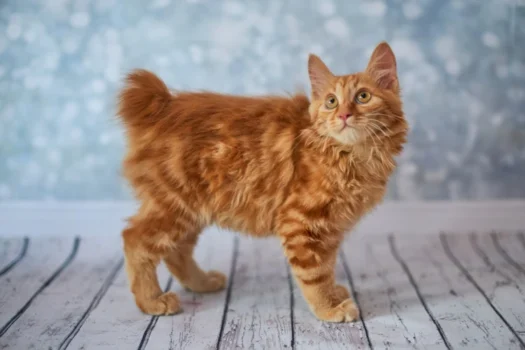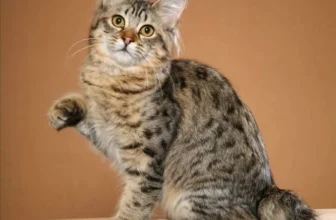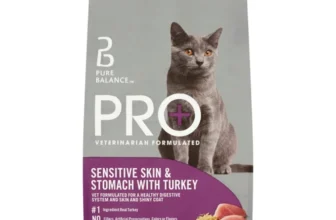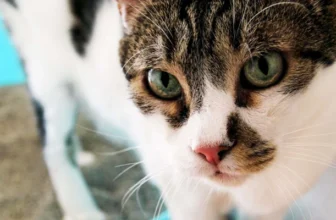Introduction
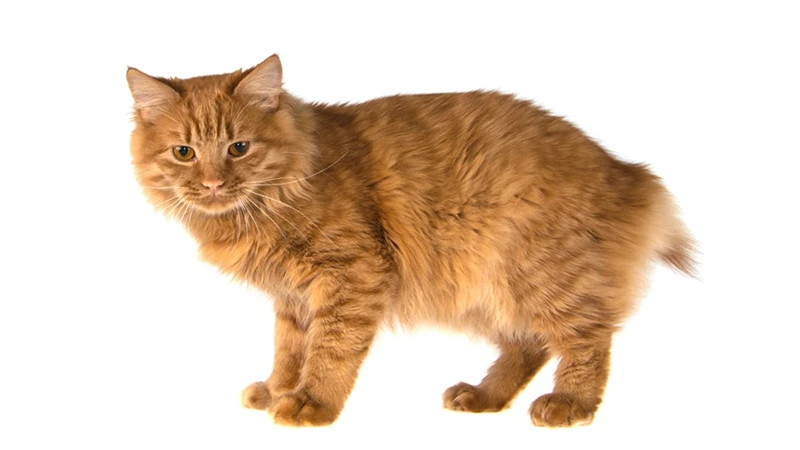
Breeding American Bobtail cats can be a rewarding and fulfilling experience for many breeders. However, it is important to keep in mind the responsibility that comes with breeding any animal. One of the most significant considerations is avoiding genetic disorders. These disorders can cause a significant impact on a cat’s quality of life and can be costly for their owner to manage. In this article, we will discuss the principles of responsible breeding, common genetic disorders in American Bobtail cats, and breeding practices that can help to reduce and even eliminate the risk of these disorders arising.
The importance of responsible breeding
Responsible breeding is essential for maintaining the health and well-being of American Bobtail Cats. Breeding practices that prioritize genetic health can have a positive impact on decreasing the prevalence of genetic disorders in the breed. It’s important to note that breeding cats without careful consideration of their genetics and health can contribute to the propagation and spread of genetic disorders.
Without responsible breeding practices, genetic disorders can easily become embedded in the breed, leading to an increased incidence of debilitating conditions in future generations of American Bobtail Cats.
Responsible breeders prioritize the health of their cats, and ensure that they are only bred when it’s safe and ethical to do so. By following breeding protocols that help identify potential genetic issues, breeders can prevent the passing of debilitating conditions onto their offspring.
Below, we outline some important steps for practicing responsible breeding:
- Conducting genetic testing to assess the potential for genetic disorders in the breeding cats
- Screening cats for health issues that are common in the breed
- Out-crossing with other breeds to maintain genetic diversity
- Proactively managing the health of breeding cats and their kittens throughout the breeding process
By following these practices, breeders can play a key role in reducing the prevalence of genetic disorders in American Bobtail Cats. Responsible breeding practices can help ensure that future generations of American Bobtail Cats are healthy and free of debilitating genetic conditions.
Learn more about genetic disorders in American Bobtail Cats and why responsible breeding is so essential to maintaining the overall health and well-being of this beloved breed.
Genetic Disorders in American Bobtail Cats
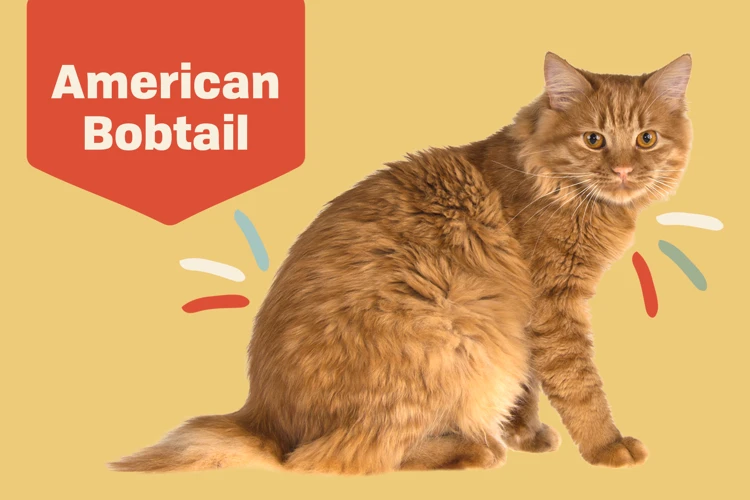
As much as we adore American Bobtail cats for their playful nature and distinctive bobbed tails, it’s essential to acknowledge the prevalence of genetic disorders that affect this breed. Genetic disorders in American Bobtail cats can lead to devastating health problems and sadly even shorten their lifespan. Understanding these diseases and ways to prevent them can maximize their health and improve their quality of life. In this section, we’ll explore common disorders that plague this breed and the importance of genetic testing and health screening.
Common genetic disorders
Genetic disorders are a common concern when it comes to breeding any animal, and American Bobtail cats are no exception. Some of the common genetic disorders found in American Bobtail cats include feline hypertrophic cardiomyopathy (HCM), hip dysplasia, polydactylism, and spinal muscular atrophy (SMA).
HCM is a heart condition that causes the thickening of the heart’s walls, which can lead to heart failure. Hip dysplasia is a condition where the hip joint does not develop properly, leading to arthritis and/or lameness. Polydactylism is a condition where cats have extra toes. While it may seem like a cute trait, it can lead to mobility issues if the extra toes are not properly formed. SMA is a condition that affects the muscles in the back, leading to weakness and difficulty with movement.
If a breeder is not careful and does not screen their breeding cats for these genetic disorders, they can easily be passed down to the offspring. This is why it is important for breeders to take responsibility for their breeding practices and to be aware of the potential for genetic disorders within their bloodlines.
It is highly recommended that potential American Bobtail cat owners do their research and only work with reputable breeders who conduct health screenings and genetic testing on their breeding cats. By doing so, the chances of acquiring an American Bobtail cat with a genetic disorder are greatly reduced.
For more information on these common genetic disorders, check out our article on Bobtail Cat Genetic Disorders.
Understanding genetic testing
Genetic testing is an essential tool for breeders to determine whether their cats carry any genetic disorders. With the help of modern technology, breeders can now identify even the slightest genetic mutations in cats that can lead to serious health complications. There are different types of genetic tests available for American Bobtail cats that breeders can conduct. These tests include DNA tests, X-rays, and ultrasounds.
DNA tests: DNA tests are perhaps the most common type of genetic test for cats. These tests can identify changes in a cat’s DNA sequence that may be associated with a genetic disorder. The results of DNA tests can also be used to predict the risk of certain disorders in the cat’s offspring. For example, if a cat has a risk allele for hypertrophic cardiomyopathy (HCM), their offspring may also be at risk of developing the disease. DNA testing is simple and non-invasive, usually involving a cheek swab or blood sample from the cat.
X-rays: X-rays are useful in screening cats for hip dysplasia, which is a genetic disorder that affects the hip joint. This condition can cause pain and discomfort in cats as they age, and it can be passed on to their offspring. X-rays can help determine the degree of hip dysplasia in cats, allowing breeders to make informed decisions about breeding.
Ultrasounds: Ultrasounds can be used to detect heart and kidney disorders in cats. For example, polycystic kidney disease (PKD) is a genetic disorder that causes fluid-filled cysts to develop in the kidneys, eventually leading to kidney failure. An ultrasound can detect the presence and severity of these cysts, and help the breeder decide if the cat should be bred or not.
It is important to note that genetic testing should not be the only criterion that breeders use when deciding whether to breed a cat. While genetic testing can provide valuable information, there are limitations to these tests. Breeders should also consider the cat’s overall health, temperament, and other factors that can affect the health of the offspring.
Using genetic testing in combination with other breeding practices like health screening, outcrossing, and proper management can help breeders avoid genetic disorders in American Bobtail cats. To learn more about responsible breeding practices, visit the importance of responsible breeding for genetic disorders in American Bobtail cats. Also, read about managing American Bobtail cats with genetic disorders to learn how to provide care for American Bobtail cats with genetic disorders.
Importance of health screening
One of the most important aspects of responsible breeding is ensuring the health of the cats involved. This can be achieved through regular health screening, which involves a series of tests to confirm that the cat is free of any genetic disorders or potential health problems.
Here are some of the most important reasons why health screening is crucial in breeding American Bobtail cats:
- Early detection of genetic disorders: Health screening tests can help to identify any genetic disorders that a cat might have inherited from its parents. Detecting such disorders early on can help to prevent them from being passed on to future generations of cats.
- Improving the breed: By only breeding cats that have passed the health screening tests, breeders can help to improve the overall health and wellbeing of the American Bobtail breed.
- Healthier and happier kittens: By breeding from healthy cats, breeders can increase the chances of producing kittens that are free from genetic disorders or other health problems. This means that the kittens are more likely to be healthy and happy throughout their lives.
It’s important to note that not all health screening tests are created equal. Breeders should work with a veterinarian who is familiar with the American Bobtail breed and who can recommend specific tests based on their experience and knowledge. Tests may include blood work, x-rays, and genetic testing.
By incorporating health screening into their breeding practices, breeders can help to ensure that the cats they bring into the world are as healthy and happy as possible. This commitment to responsible breeding is essential for the long-term sustainability and vitality of the American Bobtail breed. To learn more about genetic testing in American Bobtail cats, please visit our article on genetic testing.
Principles of Responsible Breeding

When it comes to breeding American Bobtail cats, responsible breeding practices are crucial to ensure the health and well-being of both the kittens and the breed as a whole. By following principles of responsible breeding, breeders can help minimize the risk of genetic disorders and promote genetic diversity in the breed. In this section, we will explore some key principles that can guide breeders in their efforts to promote healthy and sustainable breeding practices for American Bobtail cats.
Breeding from healthy cats
When it comes to breeding American Bobtail cats, it’s important to start by selecting healthy cats as parents. This will help ensure that genetic disorders are not passed on to their offspring. Here are some important factors to consider when breeding from healthy cats:
| Factor | Description |
|---|---|
| Physical Health | It’s important to choose cats that are in good physical health. This involves ensuring that they are free from any physical injuries or illnesses that may affect their ability to reproduce. |
| Temperament | The temperament of the cat is also important. Breeding from cats with a calm and friendly demeanor can help ensure that their offspring will be well-behaved and easy to handle. |
| Reproductive Health | Reproductive health is essential when it comes to breeding cats. Both the male and female cats should undergo regular health checks to ensure they are able to reproduce without any issues. Problems such as fertility or sterility can greatly affect the success rate of breeding. |
| Genetic Background | It’s important to consider the genetic background of both the male and female cats when breeding. This can help you identify any factors that may negatively impact the health of their offspring. Genetic testing can be used to screen for common genetic disorders in the breed and rule out any issues before breeding. |
Breeding from healthy cats is an essential part of responsible breeding practices for American Bobtail cats. Starting the breeding process with healthy parents can greatly increase the chances of producing healthy offspring and avoid genetic disorders.
Understanding genetic inheritance
Understanding genetic inheritance is crucial for responsible breeding practices. This is because understanding how certain traits are passed down from parents to their offspring is crucial in determining the likelihood of genetic disorders in American Bobtail cats. In this section, we will explore the different types of genetic inheritance patterns and how they affect breeding practices.
One of the most common types of genetic inheritance is called autosomal dominant inheritance. In this type of inheritance, only one copy of a disease-causing gene is needed for the disorder to present in the offspring. If a breeding pair both have one copy of the gene, there is a 25% chance that any given kitten will inherit two copies and develop the disorder. The table below shows an example of this type of inheritance pattern:
| Genotype | Phenotype |
|---|---|
| AA | Affected |
| Aa | Affected |
| aa | Normal |
Another type of inheritance pattern is autosomal recessive inheritance. This means that two copies of a disease-causing gene are needed for the disorder to present in the offspring. If both parents are carriers (meaning they each have one copy of the gene), there is a 25% chance that any given kitten will inherit two copies of the gene and develop the disorder. The table below shows an example of this type of inheritance pattern:
| Genotype | Phenotype |
|---|---|
| AA | Normal |
| Aa | Carrier |
| aa | Affected |
Lastly, there is X-linked inheritance which occurs when a gene is located on the X chromosome. This means that females have two copies of the gene (one on each X chromosome) while males only have one. If a male inherits a disease-causing gene from his mother, he will develop the disorder because he only has one X chromosome. If a female inherits one copy of the gene from each parent, she will be a carrier, but not show any symptoms of the disorder. The table below shows an example of this type of inheritance pattern:
| Genotype | Phenotype |
|---|---|
| XX | Normal |
| XhY | Affected |
| XhXH | Normal |
| XhXh | Affected |
Understanding the patterns of inheritance is just one piece of the puzzle when it comes to responsible breeding practices. It is important for breeders to fully understand the genetic makeup of their cats and their potential offspring in order to minimize the risk of genetic disorders in American Bobtail cats.
Genetic diversity and outcrossing
Inbreeding is a common practice in breeding cats. However, inbreeding can lead to genetic disorders and reduce genetic diversity. Outcrossing, the practice of breeding a cat with a cat from a different breed, can help bring in new genes and improve genetic diversity.
What is genetic diversity?
Genetic diversity refers to the variety of genetic characteristics within a population. It is important in breeding because it can reduce the risk of genetic disorders and improve the overall health of the breed. It can also help maintain physical characteristics and behavior traits that are important to the breed.
What is outcrossing?
Outcrossing is the practice of breeding a cat from one breed to a cat from a different breed. This can help introduce new genes into the breeding population and increase genetic diversity. However, it is important to choose a breed that is compatible with the American Bobtail breed to avoid any unwanted traits.
Benefits of outcrossing in breeding American Bobtail cats
Outcrossing can bring in new genes, increase genetic diversity and reduce the risk of genetic disorders. The American Bobtail breed has a limited gene pool, and outcrossing can help add new diversity to the breed. However, it is important to research the different breeds and choose a breed that is healthy and compatible with the American Bobtail breed.
Limitations of outcrossing in breeding American Bobtail cats
Outcrossing can also bring in unwanted traits, such as reduced litter size, different coat colors or patterns, and altered temperament. It is important to choose a breed that complements the American Bobtail breed to avoid any unwanted traits. It is also important to monitor the offspring for any adverse effects and avoid breeding any cats with harmful traits.
Conclusion
Outcrossing can be a beneficial practice in breeding American Bobtail cats to increase genetic diversity and reduce the risk of genetic disorders. However, it is important to choose a breed that is healthy and compatible with the American Bobtail breed. Proper research, health screening, and genetic testing are important to ensure the best breeding practices and outcomes.
| Benefits of Outcrossing | Limitations of Outcrossing |
|---|---|
| Increase genetic diversity | May introduce unwanted traits |
| Reduce the risk of genetic disorders | May lead to reduced litter size |
| Add new genes to the breeding population | May alter coat colors or patterns |
Breeding Practices that Avoid Genetic Disorders in American Bobtail Cats
Now that we have discussed the importance of responsible breeding and the genetic disorders that can affect American Bobtail cats, it’s time to delve into the breeding practices that can help avoid these genetic disorders. By following these practices, you can ensure that your American Bobtail kittens are healthy and free from genetic disorders. Let’s explore the steps you can take to implement these breeding practices and optimize the health and well-being of your cats.
Researching the breeder and their breeding program
When it comes to breeding American Bobtail cats, it’s important to do your research on the breeder and their breeding program. Here are some steps to take:
- Look for a reputable breeder: A reputable breeder will have a history of breeding healthy cats and will be transparent about their breeding practices.
- Ask for references: Get in touch with other cat owners who have purchased from the same breeder and ask about their experience.
- Check for any red flags: Be wary of breeders who sell kittens at unusually low prices or who have multiple cat breeds available. This could be a sign of a kitten mill or a breeder who is not focused on the health and wellbeing of their cats.
- Inquire about the breeder’s health screening and testing practices: Ask about the breeder’s process for screening cats for genetic disorders and any testing they conduct before breeding.
- Ask about the breeder’s breeding goals: A responsible breeder should have a clear breeding goal to improve the breed, reduce genetic disorders, and maintain genetic diversity.
By taking the time to research the breeder and their breeding program, you can ensure that you are purchasing a healthy American Bobtail cat that will be a great addition to your family.
Health screening and genetic testing
Ensuring the health and well-being of American Bobtail cats should be the top priority for any responsible breeder. One way to achieve this is through thorough health screenings and genetic testing. These measures can help identify any potential genetic disorders and allow breeders to make informed decisions about their breeding program.
Health Screening
Health screening involves a comprehensive physical examination of cats to detect any signs of illness or disease. By conducting regular health checks on breeding cats, breeders can ensure that they are breeding from healthy and disease-free individuals. It is recommended that American Bobtail cats be screened for common health issues such as hip dysplasia, hypertrophic cardiomyopathy, and progressive retinal atrophy.
A breeder should also check the health history of the breeding cats and their offspring to identify any signs of recurring health issues. This information can be useful in selecting the best cats for breeding and avoiding any genetic disorders.
Genetic Testing
Genetic testing is another important tool that can aid in responsible breeding practices. This process involves analyzing the DNA of cats to identify the presence of certain genetic mutations that may lead to the development of a genetic disorder. By understanding the genetics of their cats, breeders can make informed decisions about which cats to breed and avoid the risk of passing on any genetic disorders to their offspring.
There are various types of genetic tests available for American Bobtail cats, including tests for hypertrophic cardiomyopathy, progressive retinal atrophy, and polycystic kidney disease. A breeder should ensure that all their breeding cats undergo genetic testing to identify any potential genetic disorders.
The following table summarizes the recommended health screening and genetic testing measures for American Bobtail cats.
| Health Screening | Genetic Testing |
|---|---|
| Hip dysplasia | Hypertrophic cardiomyopathy |
| Hypertrophic cardiomyopathy | Progressive retinal atrophy |
| Progressive retinal atrophy | Polycystic kidney disease |
Health screening and genetic testing practices are crucial for responsible breeding practices. These measures can help identify potential health issues and genetic disorders, which can then be used to make informed decisions about breeding. By prioritizing the health and well-being of American Bobtail cats, breeders can help ensure that future generations of cats are healthy and happy.
Outcrossing with other breeds
Outcrossing with other breeds is a technique that breeders can use to introduce genetic diversity within the American Bobtail cat population. Outcrossing involves mating an American Bobtail cat with a cat from another breed that does not have the same genetic disorders. This process helps to reduce the likelihood of genetic disorders being passed down to the offspring.
Outcrossing can be a controversial topic in the breeding community as it may result in characteristics that are different from the typical American Bobtail cat breed standard. However, with careful consideration and selection, breeders can outcross to maintain the breed’s structural and behavioral characteristics while also increasing genetic diversity and minimizing genetic disorders.
The Benefits of Outcrossing
Outcrossing brings several benefits to the breeding program, including:
- Increased genetic diversity: By mating with an unrelated breed, the genetic diversity of the offspring is increased. This can help to reduce the likelihood of genetic disorders being passed down to the offspring.
- Improved overall health: Outcrossing allows for the reduction of harmful genetic traits and the introduction of healthy genes from another breed.
- New desirable traits: Outcrossing can also bring new desirable traits that can help to enhance the health and appearance of the offspring while maintaining the breed’s structural and behavioral characteristics.
The Risks of Outcrossing
Outcrossing can also have its risks and challenges, including:
- Loss of characteristics: Outcrossing may result in some of the American Bobtail cat’s characteristics being lost, which can negatively impact the breed’s appearance and behavior.
- Unpredictability of offspring: Outcrossing with another breed can produce unpredictable offspring that do not meet the desired breed standard.
- Reduced “pureness”: Outcrossing means that the offspring may not be considered “purebred” according to breed standards, which can affect their value in the breeding and pet market.
Selecting a Breed for Outcrossing
When selecting a breed for outcrossing, breeders must consider several factors, including the breed’s overall health, temperament, and compatibility with the American Bobtail cat breed. Additionally, breeders must also ensure that the outcrossed breed does not have any common genetic disorders that could be passed down to the offspring.
Conclusion
Outcrossing with other breeds is an excellent way for breeders to increase the genetic diversity of the American Bobtail cat population while also minimizing the likelihood of genetic disorders. While it may be challenging to maintain the breed’s structural and behavioral characteristics, careful consideration and selection can result in healthy, genetically diverse offspring that meet the desired breed standard.
Proper management of breeding cats and kittens
Breeding cats and their kittens must be managed properly to ensure the best possible outcome in terms of their health and well-being. It’s important to provide a safe, clean and comfortable environment for them to thrive in.
Environment: The breeding cats and their kittens should be housed in a separate area away from other cats to ensure they don’t come into contact with any infectious diseases. The area should be clean, dry and well ventilated to prevent the buildup of harmful bacteria and viruses.
Nutrition: Proper nutrition is vital for breeding cats and their kittens. The cats should be fed a well-balanced diet to support their reproductive and overall health. The kittens should be fed a high-quality diet formulated specifically for their growth and development.
Hygiene: Maintaining good hygiene is crucial for the health of breeding cats and their kittens. They should be groomed regularly to keep their coats clean and free of matting. Additionally, their environment should be cleaned and disinfected frequently to prevent the spread of disease.
Exercise and Socialization: Breeding cats and their kittens should also be provided with opportunities to exercise and socialize. This can be achieved through supervised playtime and interaction with humans or other cats. It’s important to ensure that they have enough space to play and explore while being kept safe at the same time.
Proper management of breeding cats and kittens can help to reduce the risk of health problems and ensure healthy and happy cats and kittens. It’s important to work closely with a veterinarian to ensure that all breeding cats and kittens are healthy and receive the proper care and attention they need.
Conclusion
As breeders, it is our responsibility to ensure the health and well-being of the animals we bring into the world. Breeding practices that prioritize genetic diversity, health screening, and responsible management can go a long way in reducing the prevalence of genetic disorders in American Bobtail Cats. By following the principles of responsible breeding and avoiding practices that can promote the spread of genetic disorders, we can help ensure that future generations of American Bobtails are healthy and thriving. In this final section, let’s summarize the key points and emphasize the importance of responsible breeding practices for the health and longevity of this remarkable breed.
Summary of main points
Responsible breeding practices can ensure that American Bobtail cats are healthy and not prone to genetic disorders. Here are the main points to consider:
- Breeding from healthy cats: It is important for breeders to start with healthy cats that have been health screened and tested for genetic disorders. This can help to prevent the transmission of genetic disorders to future generations.
- Understanding genetic inheritance: Breeders should have a basic understanding of how genes are inherited and passed down from parent cats to kittens. This can help them to make informed decisions about which cats to breed together and which ones to avoid.
- Genetic diversity and outcrossing: Outcrossing with other breeds can help to maintain genetic diversity, which can reduce the incidence of genetic disorders. However, it is important to choose breeds that are compatible with American Bobtail cats and to carefully screen cats for health issues.
- Researching the breeder and their breeding program: It is important to do your homework and research the breeder and their breeding program before purchasing a cat. Look for breeders who prioritize the health and well-being of their cats and who are transparent about their breeding practices.
- Health screening and genetic testing: Health screening and genetic testing can help to identify cats that are carriers of genetic disorders. Breeders should be willing and able to share this information with potential buyers.
- Proper management of breeding cats and kittens: Breeders should provide proper care for their cats and kittens, including good nutrition, regular veterinary care, and socialization. This can help to prevent health issues and ensure that cats are well-adjusted and happy.
- Importance of responsible breeding practices: Ultimately, responsible breeding practices are critical for the health and well-being of American Bobtail cats. By choosing healthy cats, understanding genetic inheritance, promoting genetic diversity, researching breeders, and providing proper care, we can ensure that future generations of American Bobtail cats are healthy and free of genetic disorders.
By following these principles, breeders can work towards producing healthy, happy cats that are free of genetic disorders, providing loving families with furry companions that they can enjoy for years to come.
Importance of responsible breeding practices
As pet owners, we must make a conscious effort to ensure our pets are healthy, happy and have the best quality of life possible. One way of doing this is through responsible breeding practices of American Bobtail cats. The significance of responsible breeding can’t be overstated. It ensures that genetic disorders are minimized, resulting in healthier and well-adjusted cats. Below are some of the reasons why responsible breeding is important:
1. Improves the overall health of American Bobtail cats: One of the major benefits of responsible breeding practices is that it improves the health of the offspring. By selecting breeding cats that are genetically diverse and healthy, breeders can reduce the risk of genetic disorders. As such, the offspring will have fewer health problems and live a healthier, happier life.
2. Promotes the longevity of the breed: Breeding practices that focus on genetic diversity and health improvements ensure that the breed continues, even for generations to come. This promotes the longevity of the breed and ensures they remain healthy and vibrant.
3. Reduces the occurrence of genetic disorders: Through responsible breeding, breeders can minimize the risk of genetic disorders in American Bobtail cats. By conducting genetic testing, health screening and outcrossing with other breeds, breeders can create healthier litters that are free from genetic disorders.
4. Ensures that the breed remains true to standards: Breeding practices that are focused on genetic diversity and selection of healthy breeding cats help to ensure that the breed remains uniform and true to standard. This ensures that the breed’s unique characteristics are maintained, and that future generations can experience the joy of owning an American Bobtail cat.
Responsible breeding practices are critical in ensuring the health, longevity and standard of the American Bobtail cat. When considering breeding cats, it’s essential to prioritize genetic diversity and health screening, genetic testing, and outcrossing to other breeds. By doing so, breeders can minimize the occurrence of genetic disorders, promote the longevity of the breed, and ensure the American Bobtail cat breed remains healthy and vibrant for generations to come.
Frequently Asked Questions
What are the most common genetic disorders in American Bobtail cats?
The most common genetic disorders in American Bobtail cats include hip dysplasia, hypertrophic cardiomyopathy, and pyruvate kinase deficiency.
What is genetic testing and why is it important for American Bobtail cats?
Genetic testing is a process that can determine whether a cat has a genetic disorder or carries a specific gene that may cause a disorder. It is important for American Bobtail cats to undergo genetic testing before breeding to avoid passing on genetic disorders to their offspring.
How can health screening help in breeding practices?
Health screening can help identify potential health issues in cats before breeding. This can help breeders make informed decisions about whether to breed a particular cat and can prevent the spread of genetic disorders.
What should breeders look for when researching other breeders and their breeding programs?
Breeders should look for a breeder with a good reputation, who prioritizes the health and well-being of their cats, and who adheres to responsible breeding practices. They should also look for breeders who have experience with the American Bobtail breed.
What is outcrossing and how can it help prevent genetic disorders?
Outcrossing involves breeding cats from different breeds to increase genetic diversity and reduce the risk of inherited genetic disorders. It can also improve the overall health and vitality of a breed.
How can breeders properly manage their breeding cats and kittens?
Breeders should provide their cats with proper nutrition, a clean and safe living environment, and regular veterinary care. They should also socialize their kittens and provide them with appropriate vaccinations before sending them to new homes.
Can genetic disorders be completely eliminated through responsible breeding practices?
No, genetic disorders cannot be completely eliminated through responsible breeding practices. However, breeders can minimize the prevalence of genetic disorders through careful breeding practices and genetic testing.
Why is genetic diversity important in breeding practices?
Genetic diversity is important in breeding practices as it can reduce the risk of inherited genetic disorders and maintain the overall health of a breed. It can also improve the breed’s adaptability and resistance to disease.
How long does the breeding process typically take from start to finish?
The breeding process can take anywhere from several weeks to several months, depending on the individual cats and their readiness to mate. The gestation period for cats is typically around 63-65 days.
Is it necessary for all American Bobtail cats to undergo genetic testing before breeding?
Yes, it is recommended for all American Bobtail cats to undergo genetic testing before breeding to prevent the spread of genetic disorders and promote responsible breeding practices.

